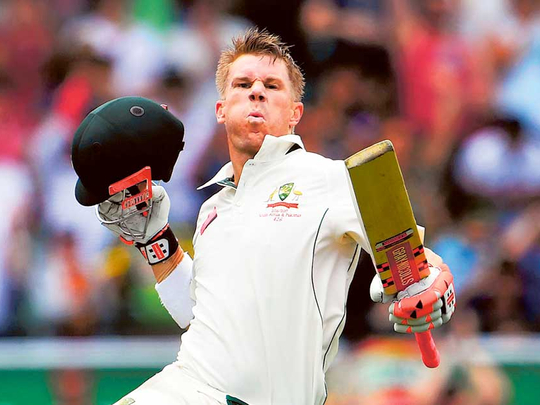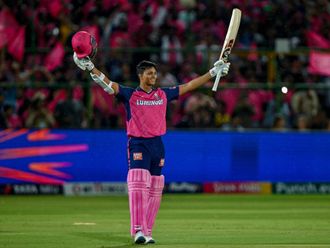
Sydney: If anything could match the joy of watching David Warner rattle off his most historically significant century, it was the delight in Bill Lawry’s voice telling the story as it happened.
“Beautiful!” he roared when Warner lashed his first of a half-dozen boundaries to point. Then, “Oh, he is making this look easy, this is Test cricket!” when the next ball provoked the same treatment. Lawry’s elation was meshed with envy: he knows better than almost anyone on the planet that his old job is never meant to be easy.
As Warner became only the fifth man in 2,245 fixtures over 140 years to reach a century before lunch on day one, Lawry concluded that it was “a great moment for Test cricket”. It really was. In this line of work, the temptation is to add mayonnaise to the good in order to pass it off as great.
“That’s obviously an honour and privilege to be among the greats of the game,” Warner said later.
“It’s great to be out there with those guys. Hopefully, I can continue with that great start and positive approach.”
Cricket lends itself to rubbish statistics that we’re all guilty of drawing upon. But this is not one. The mystique around centuries in a session is well established, but rarest of all if the first session of a Test.
Victor Trumper’s cricket life may be defined by the image of him driving so lavishly, but also for achieving the aforementioned feat against the English. Don Bradman’s 309 in a day at Leeds elevated him to superstar status at age 21, and began with a ton by lunch, too.
“No one could do this but him,” was the assessment of his former opening partner Chris Rogers. Maybe it was inevitable, despite the increased degree of difficulty as opening sessions have got shorter. Bradman faced 153 balls to lunch in 1930; there were 162 in total in the corresponding two hours today.
Rogers and Lawry both pointed to the array of strokes that Warner can execute when conditions are notionally at their toughest, bowlers at their fittest. It doesn’t help when Warner has an expectation management problem. Never has a man made 144 from fewer balls and left the field as derided as he did in Melbourne last week.
It stands to reason that on his home ground he was ready to make a statement. Warner had made a century in a session before, in Perth when he was a brash basher, rocketing balls at will between cow corner and, well, cow corner. Tuesday was defined by placement through the posh side. The crisp clip, the drive and the precise pull — knee in the air, of course — were all part of the ensemble, bisecting sweepers deployed far earlier than any captain wants.
An uppercut was the response to short-pitched bowling, defence masked as attack by the tourists. But he returned time and again to the offside force from the balls of his feet. It’s hardly a shot kids will dream of playing, but it is where Warner makes his money. In a competitive field, there was no better than the version of the stroke he played on 89; leaning, crunching and caressing all at the same time.
Warner said reaching three figures before lunch was not paramount, but that he felt the adrenalin rising as the century drew closer.
“It wasn’t nerve-racking. I told the youngster (Renshaw) with a couple of minutes to go we have to knuckle down and get through to lunch and be patient,” he said.
“Obviously as a batsman when the adrenalin is pumping and you know it’s around the corner you are probably always going to have a dig.”
- Guardian News & Media Ltd, 2017 & agencies












